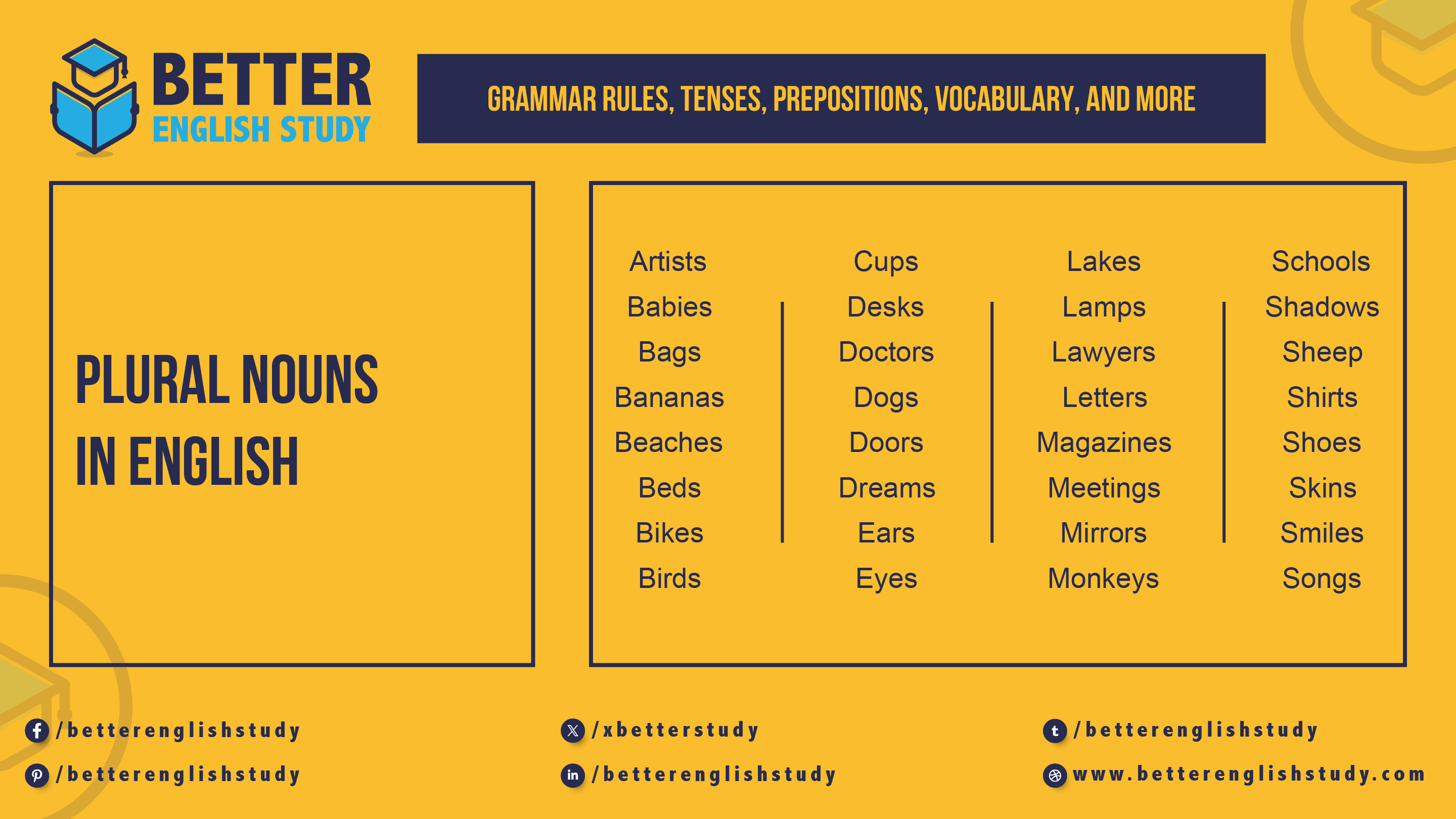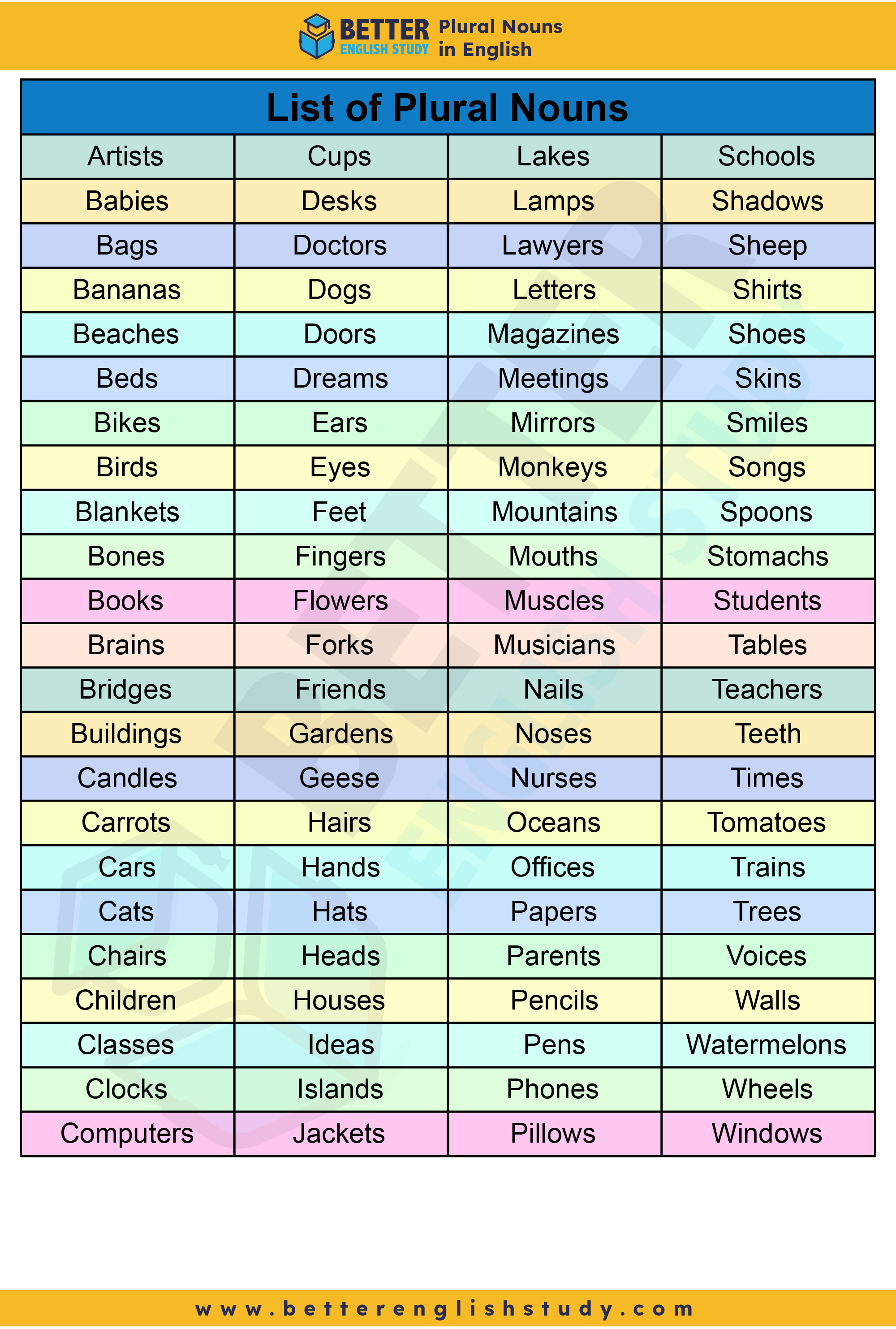
In the intricate tapestry of the English language, nouns come in various forms, adding depth and nuance to our expressions. The plural noun holds a special place, signifying diversity and abundance in our communication.
In this exploration, we delve into the nuances of plural nouns, understanding how they are formed, identifying them, and appreciating their role in language.
Understanding Plural Nouns
A plural noun is a grammatical form that refers to more than one person, place, thing, or idea. Often, singular nouns transform into their plural counterparts by adding specific suffixes.
The common suffixes for pluralization include –s, -es, -ies, -ves, and more. This transformation is a linguistic mechanism that allows us to convey the plurality of entities.
A common noun can be made plural by adding an ‘s,’ ‘es,’ ‘ies,’ or ‘us,’ or by undergoing various transformations like changing ‘us’ to ‘i,’ ‘is’ to ‘es,’ and ‘on’ to ‘a,’ among others. This flexibility in forming plurals adds richness to the English language.
Identifying Plural Nouns
One distinctive feature of plural nouns is their ending in –s or –es. However, it’s essential to note that there are exceptions to this rule, as the English language often revels in irregularities. Identifying plural nouns becomes crucial for effective communication, allowing us to convey whether we are referring to one or more entities.
Plural Nouns vs. Singular Nouns
Understanding the difference between singular and plural nouns is fundamental to mastering English grammar. Singular nouns denote one person, place, thing, or idea, while plural nouns indicate the existence of more than one.
For instance, the shift from “one apple” to “five apples” or from “one boat” to “two boats” exemplifies this contrast.
To illustrate the transformation from singular to plural, let’s explore some examples:
| Singular Nouns | Plural Nouns |
| Dog | Dogs |
| Cat | Cats |
| House | Houses |
| Child | Children |
| Leaf | Leaves |
| City | Cities |
| Friend | Friends |
| Car | Cars |
| Book | Books |
| Knife | Knives |
In each case, the addition of –s or –es signifies the shift from singular to plural, highlighting the diversity of the entities.
List of 100 Plural Nouns
| Accountants | Countries | Keys | Police |
| Apples | Cows | Knives | Roads |
| Artists | Cups | Lakes | Schools |
| Babies | Desks | Lamps | Shadows |
| Bags | Doctors | Lawyers | Sheep |
| Bananas | Dogs | Letters | Shirts |
| Beaches | Doors | Magazines | Shoes |
| Beds | Dreams | Meetings | Skins |
| Bikes | Ears | Mirrors | Smiles |
| Birds | Eyes | Monkeys | Songs |
| Blankets | Feet | Mountains | Spoons |
| Bones | Fingers | Mouths | Stomachs |
| Books | Flowers | Muscles | Students |
| Brains | Forks | Musicians | Tables |
| Bridges | Friends | Nails | Teachers |
| Buildings | Gardens | Noses | Teeth |
| Candles | Geese | Nurses | Times |
| Carrots | Hairs | Oceans | Tomatoes |
| Cars | Hands | Offices | Trains |
| Cats | Hats | Papers | Trees |
| Chairs | Heads | Parents | Voices |
| Children | Houses | Pencils | Walls |
| Classes | Ideas | Pens | Watermelons |
| Clocks | Islands | Phones | Wheels |
| Computers | Jackets | Pillows | Windows |

Examples of Plural Nouns in a Sentence
- Dogs: I see two dogs playing in the park.
The word “dogs” is plural because it represents more than one playful canine. The -s at the end shows it’s more than one dog.
- Cats: The cats are sleeping on the windowsill.
Here, “cats” is a plural noun, as there is more than one feline resting. We added -s to “cat” to make it plural.
- Houses: Our street has colorful houses.
“Houses” is plural because it talks about multiple homes. We added -es to “house” to make it plural.
- Children: The playground is full of happy children.
In this case, “children” is plural, referring to more than one kid. We changed “child” to “children” to make it plural.
- Leaves: In fall, the trees drop their colorful leaves.
“Leaves” is plural, as it talks about more than one leaf. We added -es to “leaf” to make it plural.
- Cities: There are many tall buildings in big cities.
“Cities” is plural because it discusses more than one urban area. We added -es to “city” to make it plural.
- Friends: I have two best friends at school.
Here, “friends” is plural as it talks about more than one companion. We added -s to “friend” to make it plural.
- Cars: My family has two cars in the garage.
“Cars” is plural, referring to more than one vehicle. We added -s to “car” to make it plural.
- Books: The shelf is full of exciting books.
“Books” is plural because it discusses multiple literary works. We added -s to “book” to make it plural.
- Knives: The chef uses sharp knives in the kitchen.
“Knives” is plural, referring to more than one cutting tool. We changed “knife” to “knives” to make it plural.
Whether formed by adding simple –s or undergoing more intricate transformations, plural nouns enrich our communication by providing a nuanced perspective on quantity. By understanding the dynamics of pluralization, language learners can navigate the intricacies of English grammar with confidence and precision. So, the next time you encounter a group of entities, appreciate the power of plural nouns in capturing the essence of diversity.
